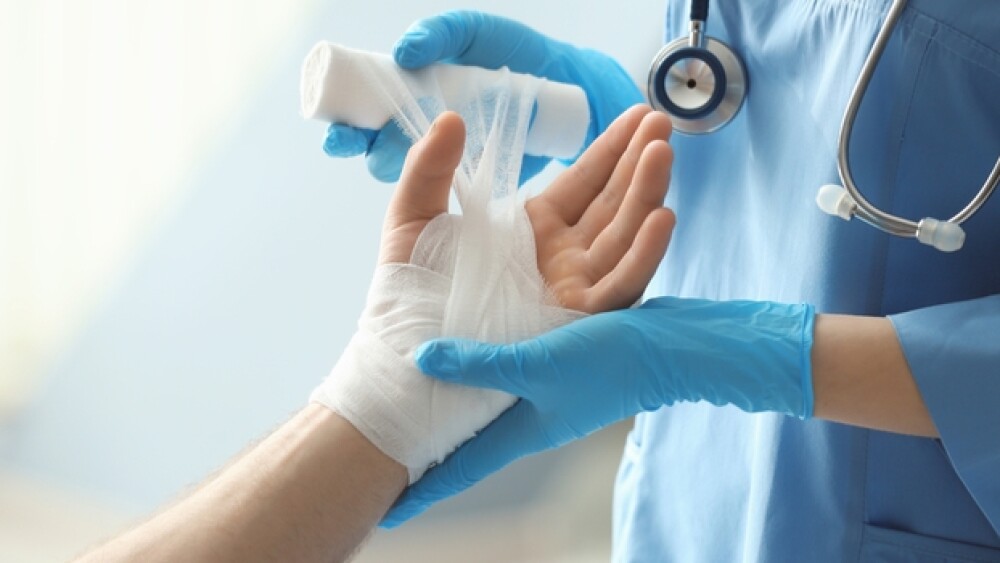In September 2018 a leap forward in treating burn victims was made with the approval of Avita Medical’s RECELL Autologous Cell Harvesting Device. The Food and Drug Administration (FDA) green lit the California-based company’s burn treatment device that uses a small amount of a patient’s own skin to prepare what is called Spray-On Skin Cells.
In September 2018 a leap forward in treating burn victims was made with the approval of Avita Medical’s RECELL Autologous Cell Harvesting Device.
The Food and Drug Administration (FDA) green lit the California-based company’s burn treatment device that uses a small amount of a patient’s own skin to prepare what is called Spray-On Skin Cells. The application can take about 30 minutes from the time the skin graft is taken to the time the single-use sterile device is used to treat the thermal wound. The RECELL system creates spray-on skin cells from a biopsy of normal skin form a patient. One biopsy, which is significantly smaller than a traditional skin graft to cover a burn wound, will cover about 10 percent of a patient’s body. If a patient suffers from burns over a significant amount of the body, more RECELL kits can be used. For many burn types, first and second-degree, the spray on treatment is enough to repair the wound with hopefully minimal scarring. In a third-degree burn, RECELL can be used in conjunction with a skin graft due to the severity of the burn.
Michael Perry, Avita Medical’s chief executive officer, told BioSpace that the RECELL treatment, typically a one-and-done program, actually has a faster recovery time than a traditional graft due to the way the cells are formulated in the RECELL product. He also pointed to the fact that the area where the skin graft is taken from is 80 percent smaller than the standard of care.
“It means patients are released from the hospital earlier and are typically off pain meds much quicker,” Perry said. “For second degree burns that are treated with RECELL alone, the results are truly fantastic. It is transformational for the patients and their lives going forward.”
Perry noted that over the course of his career, the RECELL product is one of the few he’s been affiliated with that’s been a “major step up in quality of care and outcomes for patients.”
After being treated with RECELL, wound closure typically occurs within six to eight days of treatment and pigmentation typically begins to return to the area within six months.
RECELL was formally launched in January and over the past few months, Perry said it is meeting and, in some cases, exceeding their expectations. The company added 20 members to its sales team to help with the commercialization effort. Prior to January’s official launch, the company said 36 burns centers have begun the purchase authorization process with their hospital administration. Additionally, 25 burn centers have been trained and certified in the use of the RECELL System. From approval to Dec. 31, 2018, Perry said early orders of the RECELL system generated about $1 million for the company. The company will release its quarterly financial results in the coming weeks, which will provide additional details on RECELL’s launch. Perry added that the company has not yet given guidance as far as market expectations, but will be doing so.
Perry noted that RECELL is a product that is capable of providing significant financial advantages for hospitals and the healthcare system. Earlier this month, the company announced health economic data projecting that use of the RECELL System to treat patients with severe burns could save a major U.S. burn center up to $28 million annually compared to treatment with the standard of care.
Perry said Avita isn’t done with RECELL yet. The company is conducting tests regarding scarring effects. While there is no hard data to support claims about scarring now, Perry said there is some evidence to show that scarring is significantly reduced with the use of RECELL. Another study that Perry is particularly excited about is how RECELL may be used to help people suffering from vitiligo disease, a disease characterized by patches of the skin losing its pigmentation. Perry noted that it’s a problem that affects between 3 and 5 percent of people and can create serious social stigmas in certain cultures. For example, Perry noted that in parts of Asia, vitiligo is referred to as “white leprosy.”
With the success RECELL is showing in treating burn victims and saving health systems money, it’s likely that RECELL will become a cornerstone product for the industry as it is for Avita Medical.





